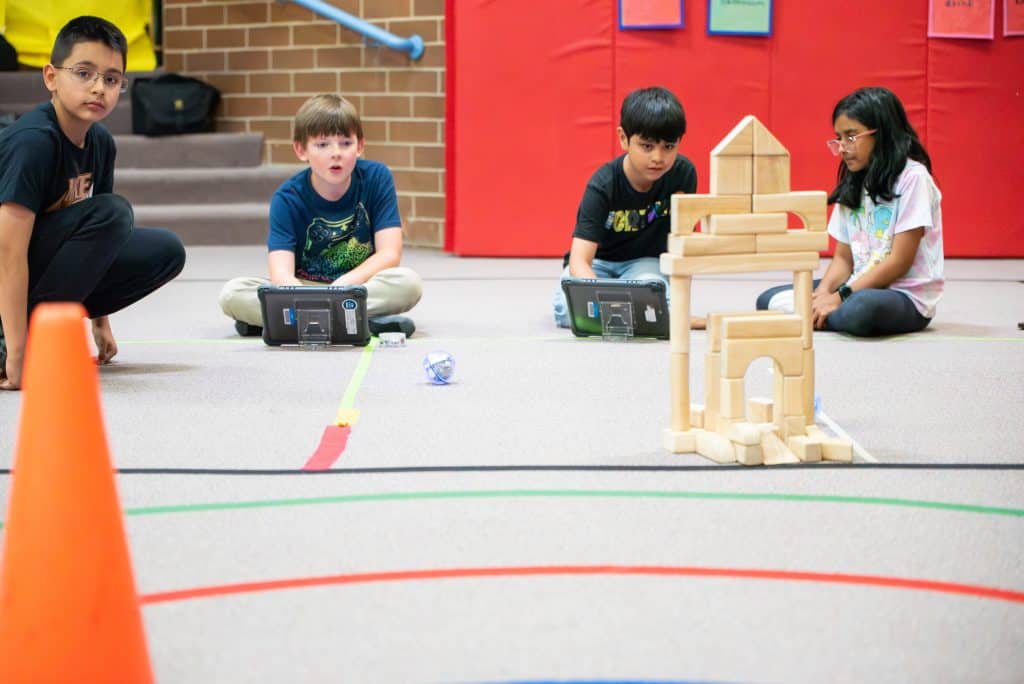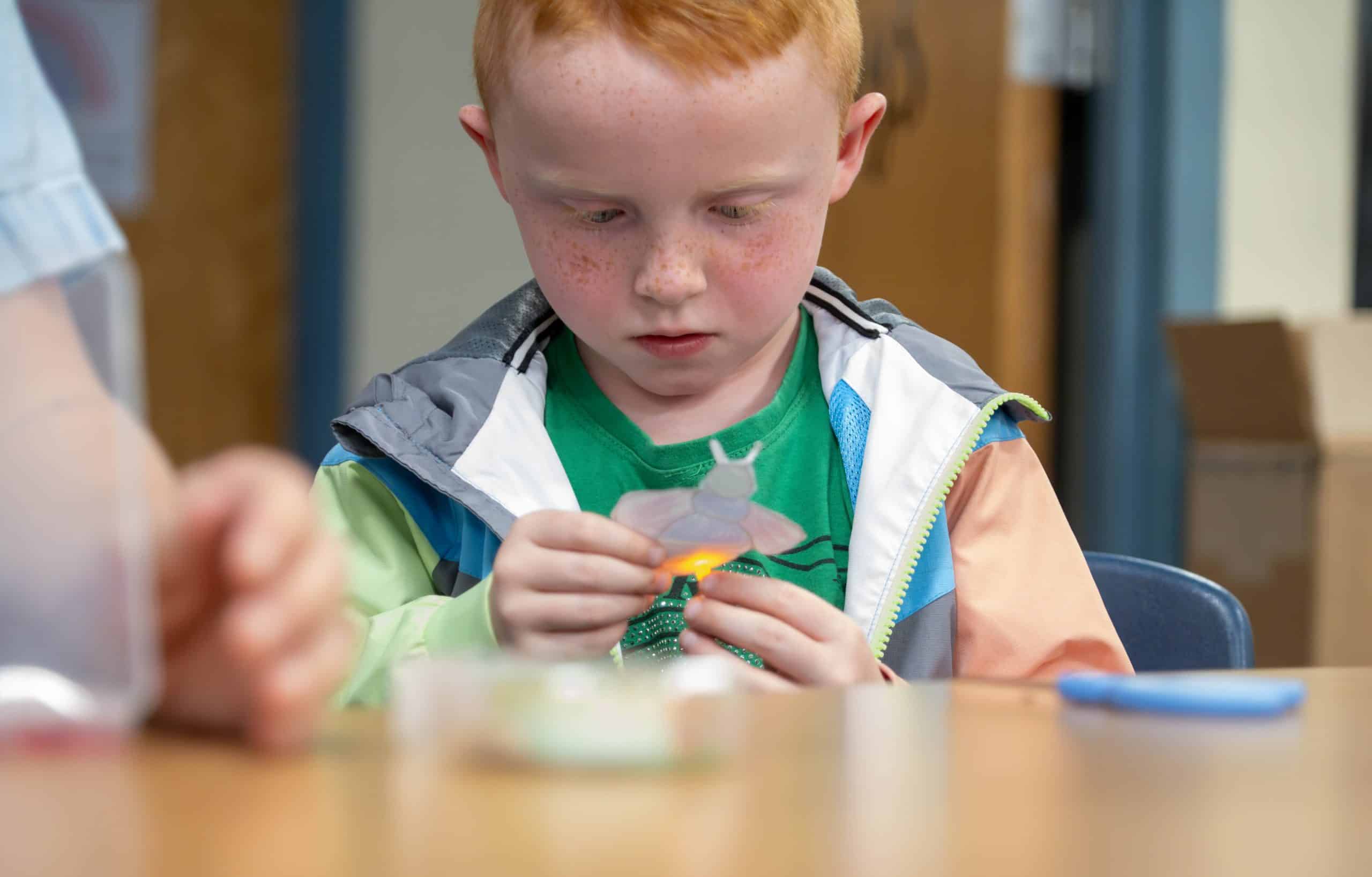This school year, Rocky Mountain Elementary School transformed the way students engaged with Science, Technology, Engineering, and Mathematics (STEM) and the design thinking process. “STEM and design thinking are woven into everything we do at Rocky Mountain,” explained Carly Hester, STEM Teacher at Rocky Mountain. “We wanted to boost STEM opportunities without cutting into classroom time, so we came up with WonderLab.”
WonderLab is a unique program that integrates STEM concepts into the school’s specials: art, music, and PE. “Each week, we infuse STEM into a different specials class and co-teach a hands-on, fun unit,” explained Hester. “This approach allows students to explore overlapping ideas in a more natural way.”
Every student from kindergarten through fifth grade spends 45 minutes in WonderLab each week. In addition to that, classroom teachers incorporate STEM and design thinking into their literacy and science lessons. “We have Science Thursdays, where students dive into social studies and science for a full hour,” stated Hester. “This lets them engage more deeply with the content.”

Teachers at Rocky Mountain excel at incorporating design thinking into projects connected to their ReadyGEN units. “One notable example comes from our second-grade biliteracy class, where students read about Wangari Maathai’s efforts to combat deforestation and then built their own “Tree of Peace” using only pipe cleaners.
WonderLab has introduced students to various hands-on, project-based learning experiences. “We’ve studied the sound of music, and students composed their own songs using water xylophones,” shared Hester. “In art, they learned about circuits and created figures out of conductive salt dough that lit up. In PE, intermediate students made exercise warm-up videos for younger students, who explored the science behind why our bodies need exercise.”
These experiences are designed to foster critical thinking and problem-solving skills in a supportive environment. “Students learn how to embrace challenges and view them as opportunities to grow,” said Hester. “Feedback helps them refine their designs and experiments, enhancing their learning journey. We are creating and interpreting graphs in PE, showing them that math isn’t just for ‘math time.’”
The impact of the school’s focus on STEM has been profound. “Our diverse and tightly knit student body has benefited greatly,” said Hester. “Offering hands-on, team-centered challenges helps our multilingual and newcomer students quickly feel part of our community. STEM showcases the many talents and rich backgrounds our students bring every day.”

